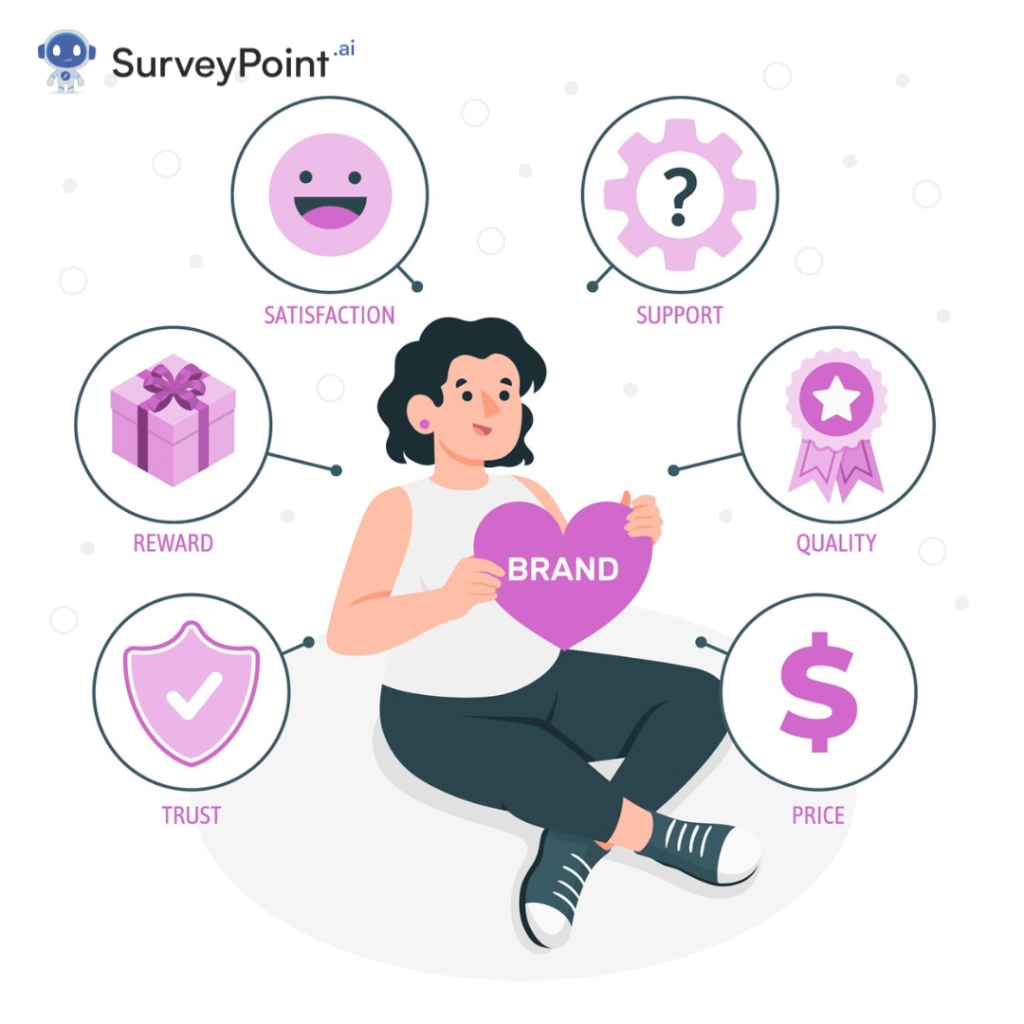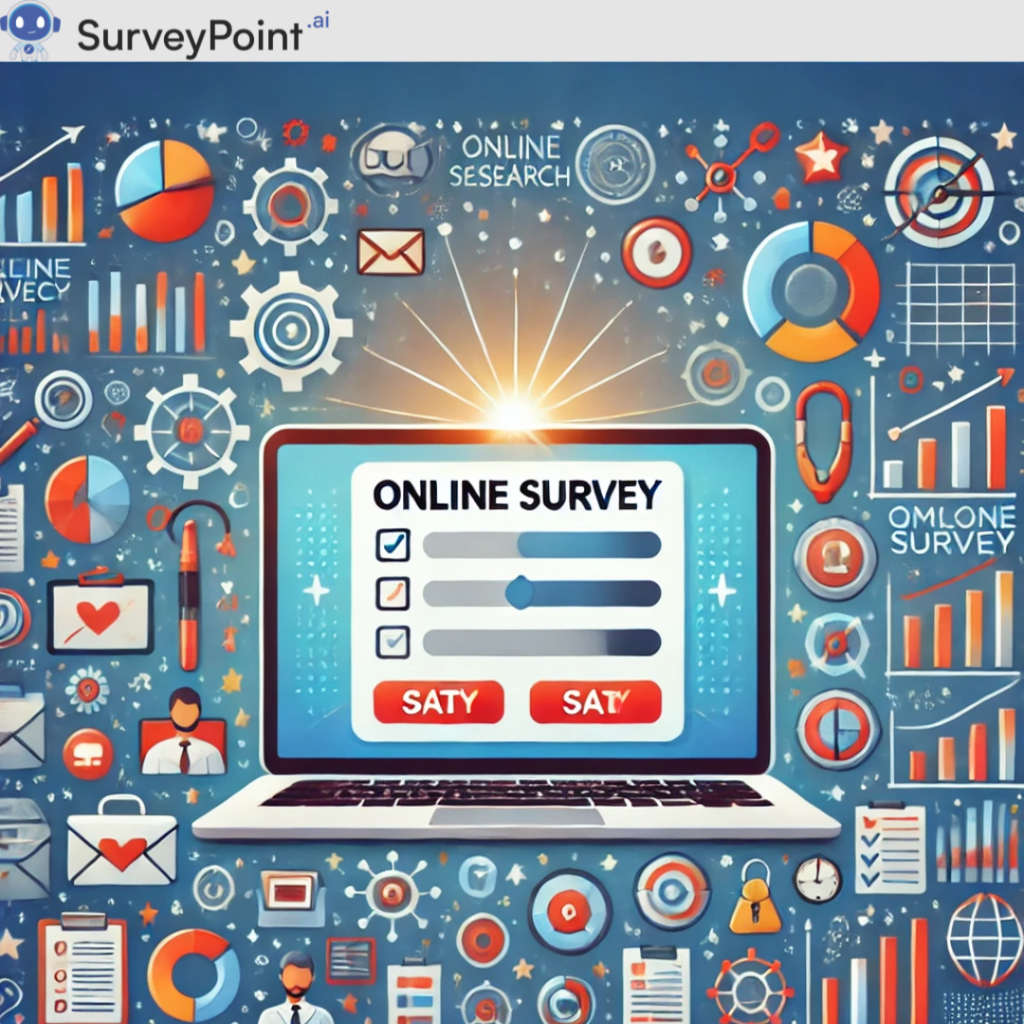
In a hyper-competitive market landscape, where countless brands vie for consumer attention, brand loyalty emerges as the ultimate differentiator. Brand loyalty is the emotional and behavioral commitment a customer exhibits toward a brand, reflected in repeat purchases, advocacy, and resistance to competitors’ offerings. For businesses, fostering and measuring brand loyalty is essential for sustained growth, reduced churn, and improved profitability.
This comprehensive guide delves into the intricacies of measuring brand loyalty. We’ll explore its significance, key metrics, methodologies, and actionable insights to help businesses evaluate and strengthen their brand loyalty strategies.
What is brand loyalty?
Brand loyalty is a consumer’s consistent preference for one brand over others in the market. Unlike customer satisfaction, which reflects short-term contentment, brand loyalty signifies a long-term relationship built on trust, positive experiences, and emotional connections.
Types of brand loyalty:
- Behavioral Loyalty: repeated purchases due to convenience or habit rather than a strong emotional connection.
- Emotional Loyalty: Deep-rooted affection for a brand, driven by shared values, trust, or positive associations.
- Attitudinal Loyalty: A consumer’s preference or positive perception of a brand, often leading to advocacy or willingness to pay a premium.
Why is measuring brand loyalty important?
- Informs strategic decisions: measuring loyalty helps businesses assess the effectiveness of marketing strategies and product offerings.
- Boosts Retention: loyal customers are less likely to switch to competitors, ensuring consistent revenue streams.
- Enhances Profitability: Acquiring new customers is more expensive than retaining existing ones, and loyal customers tend to spend more over time.
- Drives Advocacy: loyal customers become brand ambassadors, promoting the brand through word-of-mouth or social media.
- Identifies Areas for Improvement: Understanding loyalty metrics reveals gaps in customer satisfaction and areas requiring enhancement.
Key Metrics for Measuring Brand Loyalty
- Net Promoter Score (NPS):
Measures customer willingness to recommend a brand to others.- How it Works: Customers rate their likelihood to recommend on a scale of 0-10.
- Classification:
- Promoters (9-10): loyal enthusiasts.
- Passives (7-8): satisfied but unenthusiastic.
- Detractors (0–6): dissatisfied customers.
- Formula: NPS = % Promoters – % Detractors.
- Customer Retention Rate (CRR):
Indicates the percentage of customers retained over a specific period.- Formula: CRR = ((Customers at End – New Customers) / Customers at Start) × 100.
- Customer Lifetime Value (CLV):
Predicts the total revenue a business can expect from a customer during their lifetime.- Formula: CLV = average purchase value × purchase frequency × Average customer life span.
- Repeat Purchase Rate (RPR):
Tracks how often customers return to make subsequent purchases.- Formula: RPR = (Repeat Customers / Total Customers) × 100.
- Churn Rate:
Measures the percentage of customers who stop engaging with a brand during a given period.- Formula: Churn Rate = (Lost Customers / Total Customers at Start) × 100.
- Engagement Metrics:
Includes website visits, app usage, social media interactions, and participation in loyalty programs, providing indirect insights into loyalty. - Customer Satisfaction Score (CSAT):
Measures customer satisfaction with a product, service, or interaction.- How it Works: Customers rate their satisfaction on a scale (e.g., 1-5 or 1-10).
Methods to Measure Brand Loyalty
- Surveys and questionnaires:
Direct feedback from customers through structured surveys measuring satisfaction, recommendations, and loyalty. - Loyalty Program Data:
Analyzing participation rates, reward redemptions, and repeat purchases through loyalty programs. - Social Media Sentiment Analysis:
Gauging brand sentiment by monitoring mentions, comments, and reviews on social platforms. - Purchase Behavior Analysis:
Tracking purchase frequency, order value, and retention rates to assess behavioral loyalty. - Customer reviews and testimonials:
Analyzing qualitative feedback to understand emotional connections and brand perception. - Heatmaps and Click Tracking:
Observing user interactions on websites or apps to identify levels of engagement and satisfaction. - Third-Party Tools:
Utilizing analytics platforms like Google Analytics, HubSpot, or Salesforce to gather loyalty-related insights.
Factors Influencing Brand Loyalty
- Product Quality: Consistently high-quality products build trust and satisfaction.
- Customer Service: Positive interactions with support teams significantly impact loyalty.
- Pricing Strategy: Competitive and transparent pricing fosters trust and repeat business.
- Brand values: alignment with customers’ values enhances emotional loyalty.
- Consistency: Delivering a seamless and reliable experience across touchpoints.
- Personalization: Tailored offerings and communications make customers feel valued.
- Community Building: Creating a sense of belonging through brand communities.
Strategies to Strengthen Brand Loyalty
- Implement Loyalty Programs: Offer rewards for repeat purchases, referrals, or social media advocacy.
- Enhance Customer Experience (CX):
- Simple navigation across digital platforms.
- Provide quick and effective customer support.
- Focus on Personalization:
- Use data-driven insights to deliver personalized recommendations and content.
- Engage customers emotionally:
- Share authentic brand stories.
- Support causes that resonate with your target audience.
- Encourage Feedback: Actively seek customer feedback and implement meaningful changes.
- Leverage Social Media: Engage customers through interactive content, polls, and user-generated content campaigns.
- Surprise and Delight: Surprise customers with unexpected rewards, exclusive offers, or thoughtful gestures.
- Foster Brand Advocacy:
- Recognize loyal customers publicly.
- Offer referral bonuses for recommending the brand to others.
Challenges in Measuring Brand Loyalty
- Subjectivity: Emotional and attitudinal loyalty is hard to quantify.
- Data Silos: Fragmented data across departments can hinder comprehensive analysis.
- Changing Market Trends: Evolving consumer behaviors require dynamic measurement approaches.
- Bias in Feedback: Surveys may not always capture honest or complete responses.
- Complex Customer Journeys: Multi-channel interactions make it challenging to pinpoint loyalty drivers.
Real-World Examples of Measuring Brand Loyalty
- Amazon:
Through its Prime membership program, Amazon tracks repeat purchases, subscription renewals, and customer satisfaction to measure loyalty. - Starbucks:
Starbucks leverages its Rewards program to monitor purchase frequency, engagement, and customer advocacy. - Apple:
By analyzing product ecosystems, customer satisfaction scores, and retention rates, Apple sustains high levels of brand loyalty. - Nike:
Nike uses social media engagement, app usage, and community participation to gauge emotional loyalty among its customers.
Future Trends in Measuring Brand Loyalty
- AI and Machine Learning: Advanced algorithms will predict loyalty trends and offer personalized insights.
- Voice of the Customer (VoC) Tools: Enhanced tools to capture customer sentiment across channels.
- Blockchain in Loyalty Programs: Ensuring transparency and security in reward systems.
- Integrated Analytics Platforms: Unified dashboards to consolidate loyalty metrics across touchpoints.
- Sustainability as a Loyalty Driver: Brands focusing on eco-conscious practices will see increased loyalty from ethically-minded consumers.
Conclusion
Measuring brand loyalty is a dynamic process that requires a blend of quantitative metrics, qualitative insights, and strategic tools. By understanding customer behaviors, addressing their needs, and fostering emotional connections, brands can build a loyal customer base that serves as the foundation for long-term success.
Begin your journey toward mastering brand loyalty measurement today and unlock the full potential of your brand’s relationship with its customers.




